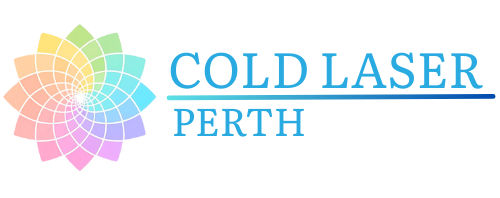How does Cold Laser Therapy work?
What conditions can be treated with Cold Laser Therapy?
Does the treatment hurt? What does it feel like?
How long does each session last?
How many sessions are needed to see results?
Are the results of Cold Laser Therapy long-lasting?
Can Cold Laser Therapy be used in conjunction with other treatments?
Is Cold Laser Therapy TGA-approved?
Are there any side effects or risks associated with Cold Laser Therapy?
How does Cold Laser Therapy compare to other treatments like cryotherapy?
Can Cold Laser Therapy be used over medical implants or metal?
Who is performing my laser session?
How deep into the tissue can laser light penetrate?
Does low-level laser technology cause heat damage or cancer in the tissue?
Who should not have Cold Laser Therapy?
Is low-level laser technology scientifically well documented?
What is Cold Laser Therapy?
Cold Laser Therapy involves the application of low-power lasers to the body's surface to stimulate cellular function, reduce pain, and promote healing without generating heat.
Check out this page (hyperlink to What is Cold Laser Therapy) to learn more.
How does Cold Laser Therapy work?
The therapy uses specific wavelengths of light to penetrate tissues, where it's absorbed by cells. This absorption enhances cellular energy (ATP) production, leading to improved cell function and accelerated healing processes.
What conditions can be treated with Cold Laser Therapy?
Cold Laser Therapy is effective in treating various conditions, including:
- Arthritis
- Back pain
- Carpal tunnel syndrome
- Nerve pain
- Tendonitis
- Sports injuries
- Muscle strains
It's also used to promote wound healing and reduce inflammation.
Is Cold Laser Therapy safe?
Yes, Cold Laser Therapy is considered safe when administered by trained professionals. It is non-invasive, drug-free, and has minimal side effects. However, it's essential to avoid shining the laser directly into the eyes and not to use it over cancerous tissues.
Does the treatment hurt? What does it feel like?
Most patients experience little to no sensation during treatment. Some may feel a mild, soothing warmth or tingling at the application site. There is typically no pain associated with the therapy.
How many sessions are needed to see results?
The number of sessions required varies based on the individual's condition:
- Acute conditions: May require daily treatment, especially if accompanied by significant pain.
- Chronic conditions: Typically respond better when treatments are received 2-3 times per week.
Improvement is often noticed after a few sessions, but a full course of treatment may be necessary for optimal results.
Are the results of Cold Laser Therapy long-lasting?
Yes, Cold Laser Therapy aims to heal the underlying condition, not just mask the symptoms. This approach leads to long-lasting relief rather than temporary solutions.
Can Cold Laser Therapy be used in conjunction with other treatments?
Absolutely. Cold Laser Therapy can complement other treatments such as chiropractic care, physical therapy, massage, and post-surgical rehabilitation to enhance overall outcomes.
Are there any side effects or risks associated with Cold Laser Therapy?
Cold Laser Therapy is non-invasive and typically free from significant side effects. Some patients might experience temporary soreness or an increase in pain after treatment, but these sensations usually subside quickly.
How does Cold Laser Therapy compare to other treatments like cryotherapy?
Cold Laser Therapy has been shown to be more effective than cryotherapy (ice therapy) in treating muscle strains and promoting recovery. It improves regional circulation and reduces pain without the discomfort associated with ice treatments.
Can Cold Laser Therapy be used over medical implants or metal?
Yes, Cold Laser Therapy is safe to use over medical implants or metal. It is a light treatment and does not involve heating, making it safe for post-operative wound healing and patients with hip or knee replacements.
Who is performing my laser session?
Your Cold Laser Therapy session will be performed by a qualified chiropractor who has been specifically trained to administer Cold Laser Therapy.
How deep into the tissue can laser light penetrate?
Cold Laser Therapy can penetrate several centimeters into the tissue, depending on the wavelength, tissue type, and treatment technique. The therapeutic window for laser penetration is typically between 600-1200 nanometers, allowing the light to safely reach muscles, tendons, bones, and joints for effective treatment.
Does low-level laser technology cause heat damage or cancer in the tissue?
No, Cold Laser Therapy does not cause heat damage or cancer. Unlike high-intensity lasers used in surgical procedures, low-level lasers do not produce enough energy to damage cells or DNA. Instead, they stimulate natural healing processes without adverse effects.
Who should not have Cold Laser Therapy?
Cold Laser Therapy is safe for most people, but it is generally not recommended for:
- Pregnant women (over the abdomen)
- Patients with active cancer in the treatment area
- Individuals with epilepsy (if using pulsed light settings)
- Patients with pacemakers (if electro-stimulation is used)
Always consult with a healthcare professional to determine if Cold Laser Therapy is right for you.
Is low-level laser technology scientifically well documented?
Yes, Cold Laser Therapy is backed by extensive clinical research and scientific studies demonstrating its effectiveness for pain relief, tissue repair, and inflammation reduction. It is widely used in sports medicine, physiotherapy, chiropractic care, and rehabilitation clinics worldwide.
If you have further questions or wish to schedule a consultation, please contact us.
